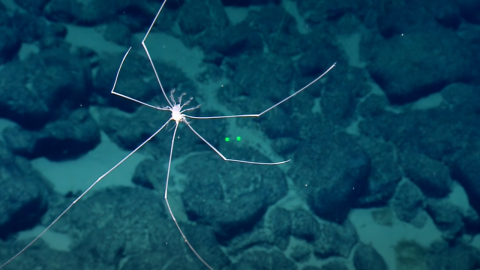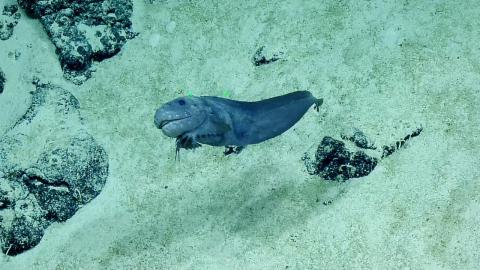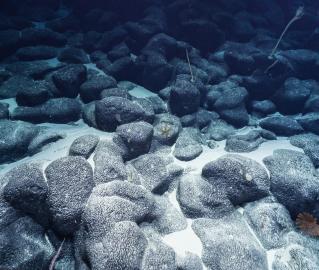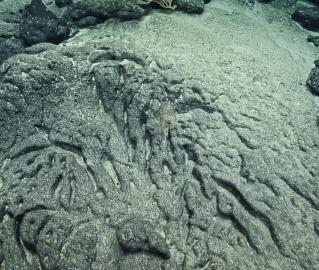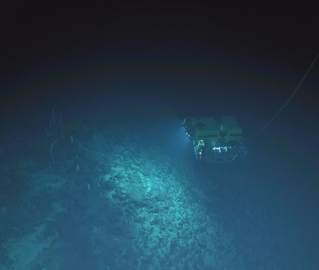Sampling a Predatory Tunicate
Have you ever heard of a tunicate? Although this nearly clear creature may not look familiar, this is a close relative to our human explorers. Tunicates have a notochord (an early development spinal cord) before developing their water-sac style body with two siphons one to intake water and one to expel it. Despite its benign appearance, tunicates are actually filter-feeding predators. Our Corps of Exploration sampled this marine invertebrate during our dive on guyot 123 north-northwest of Kingman Reef during the NA149 expedition. This underwater organism wowed our control van with its transparent body and mystery dots, which experts speculated to be part of its reproductive system. Collecting this tunicate will help experts learn more about this unique structure.
Once an expedition ends, collected data and specimens become available for researchers worldwide to answer questions about the deep ocean through data centers and museum collections. Many deep-sea locations are unlikely to be revisited, further increasing the value of exploration data and voucher specimens since they may remain the only information about a particular location for decades to come.
Learn more about this expedition funded by NOAA Ocean Exploration via the Ocean Exploration Cooperative Institute.
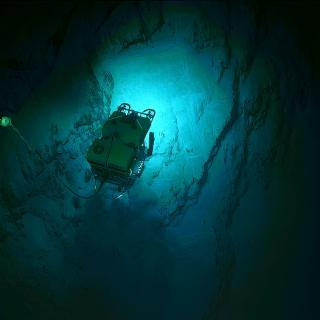
Exploring Deep Sea Habitats Near Kingman Reef & Palmyra Atoll
Our first live expedition of 2023 brings us back to the region of Kingman Reef and Palmyra Atoll as part of our ongoing effort to explore the deep ocean in and around the Pacific Remote Islands Marine National Monument (PRIMNM) through the Ocean Exploration Cooperative Institute.
